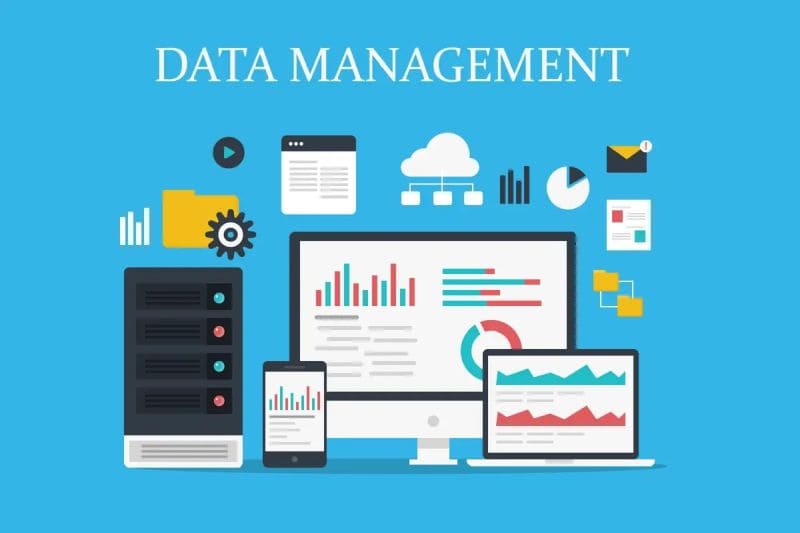When data or IT leaders invest in an AI solution, one of their goals is likely to make their organization’s data more actionable and accessible. However, research shows that many employees believe there is room for improvement on this front.
In a recent IDC study, FutureScape: Worldwide Data and Content Technologies 2023 Predictions, only 30% of employees said actionable information is “effective” or “very effective” in influencing their work processes. This suggests that most employees have difficulty accessing useful data when and where they need it.
To ensure employees benefit from high-quality, accessible data, leaders must improve their data systems and tools—before investing in AI, not after.
Bridging the gap between data and action
There is a clear discrepancy between data expectations and reality. Closing this gap requires a three-pronged strategy that focuses directly on the needs of business users:
- Bring systems into compliance with goals
Before you implement additional data or AI tools, you need to deeply understand key workflows and user goals. Solving business problems must remain a priority. Technology for technology’s sake is the enemy of progress. - Establish trust
Ensure data is accurate, secure, transparent, and up-to-date. This ensures that users perceive the organization’s information as credible and useful rather than unreliable and distracting. Quality is more important than quantity. - Position the AI as a co-pilot
Make interactions with AI seamless by providing users with systems that can answer their questions, identify patterns, make recommendations within existing interfaces, and learn preferences over time. AI technologies should simplify tasks, not complicate them.
Organizations that emphasize human productivity rather than automation can create an insight-driven culture where engaged employees have the solutions they need.
Understanding current user needs and AI use cases
Master data fuels enterprise AI, but how do employees actually use AI on a day-to-day basis? Fresh information obtained as a result survey 2000 people conducted by Altair. As it turned out, employees most often use AI to solve the following problems:
- quality assurance (QA);
- improving customer experience;
- predictive maintenance;
- ensuring supply chain efficiency;
- product design.
Notably, with the exception of QA, most use cases directly empower employees or engage customers. And yet, as mentioned, only 30% of workers say actionable data fits into their workflow. This striking gap underscores the need for most organizations to provide their teams with better data, not just more AI tools.
What is the conclusion? The success of AI is entirely dependent on the availability of quality data. And data availability is entirely dependent on the adoption of a viable set of tools, including a material data management (MDM) solution. By improving the quality of cross-functional data, IT leaders can unlock the power of AI across the enterprise.
Teams rightfully need help automating key tasks. The flexible and reliable data foundation that MDM provides allows AI to improve the efficiency of the entire enterprise. The employee experience is enhanced by technology that is designed to be reliable and user-centric.
Ultimately, AI only lives up to its promise if fundamentals like MDM enable self-service analytics and real-time decision making. Work productivity depends on correct, coherent and clear data. By doubling down on master data first, leaders can unlock frictionless access to AI.
Increasing trust with an incremental approach to AI
Organizations that hope to use AI and machine learning in their MDM strategies, are faced with an important decision: whether to prioritize advanced analytics or end-user adoption of the technology. Gradual implementation aimed directly at increasing the productivity of business users has five undeniable advantages:
- Serves the largest stakeholder group (business users) by building intelligence directly into existing MDM interfaces and data applications.
- Accelerates value creation by improving commonly used systems versus investing in new or untested capabilities. The priority is to solve known problems faster.
- Allows you to limit destructive effects by working with familiar tools, rather than introducing new, untested ones. Change management remains a barrier to technology adoption, especially for less tech-savvy users.
- Reduces the risk of data disclosure because statistical models and recommendations are built on external reference data rather than sensitive internal data. Data management and ethics remain top of mind.
- Creates opportunities to build trust and clarify long-term strategies: start small but think big. User feedback guides the ongoing development of the AI/ML platform.
This “AI as co-pilot” approach allows organizations to better serve key stakeholders while applying lessons learned to future initiatives.
AI and the enterprise: an overview of development prospects
Today’s data-driven imperative creates intense pressure to rapidly adopt AI and modernize infrastructure such as MDM. However, frustrated executives are well aware that there are no magic pills.
Neither flashy AI, nor hastily implemented MDM system alone will not make actionable information suddenly ubiquitous. Instead, leaders should take a more pragmatic path.
First, tie new solutions directly to user needs and establish workflows. New features should make your work easier, not complicate it. Second, people’s responsibility to make judgments about the capabilities and limitations of technology must be respected. Trust in AI develops along with understanding its reasoning and mastering its controls.
Finally, focus less on chasing the brightest prospects and more on strengthening the data foundation across all teams. Excellence in MDM, while less glamorous, unlocks the power of data now and in the future.
With reasoned restraint and a spirit of human collaboration, organizations will be able to embrace innovative AI technologies while avoiding the hype that many people fall into. Remember: your employees want to feel empowered, not overwhelmed. If we start with this, responsible innovation will follow.





